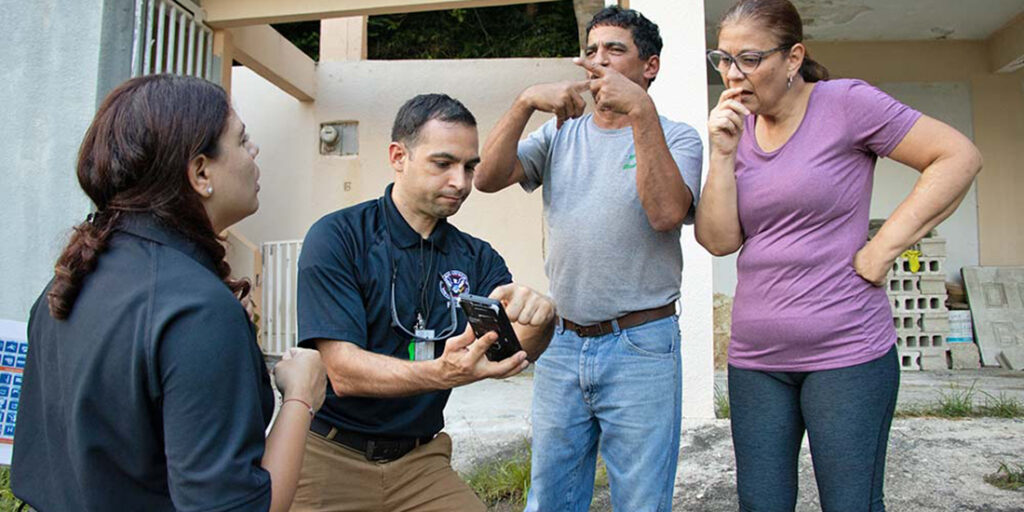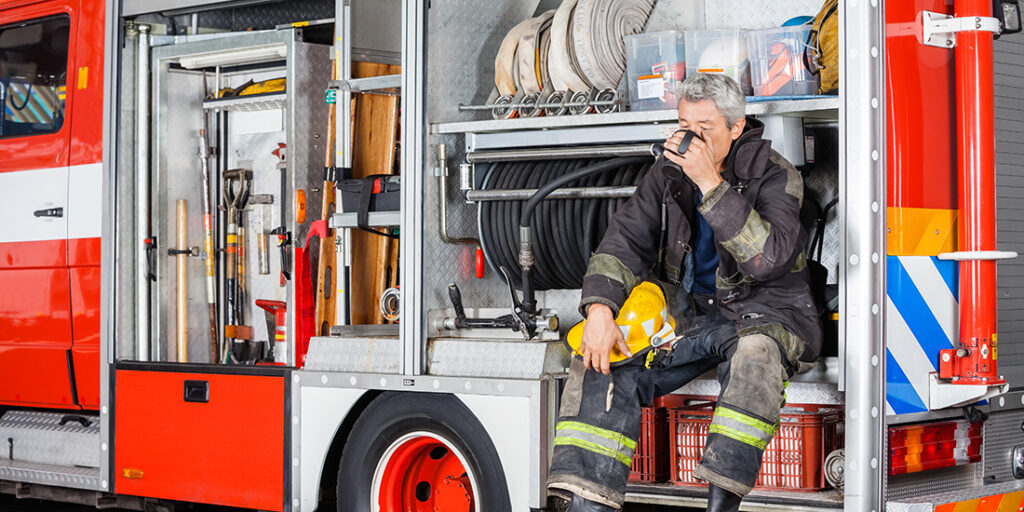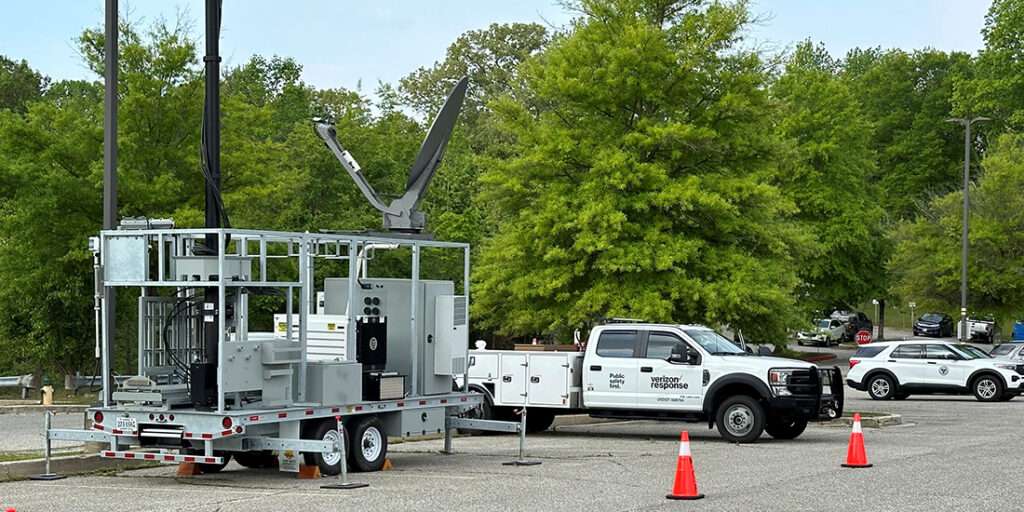EMERGENCY MEDICAL SERVICES

Understanding Service Dogs: What First Responders Need to Know
- Susan Cohen
Service dogs do far more than guide or retrieve—they are medical equipment, trained to monitor, alert, and even intervene during a health crisis. For first responders, understanding these working dogs can mean the difference between life and death.
MOST Recent

Not Lost in Translation: A Multilingual Corps Approach
Diana Sanchez-Vega
May 14, 2025
Disaster survivors and responders often face psychological hazards like acute stress disorder, depression, and post-traumatic stress. These issues are worsened in multilingual communities, where language barriers hinder communication and delay aid. Effectively addressing these challenges goes beyond basic translation or ad hoc interpreting to address the whole community.

A Holistic Strategy for Responders’ Well-Being
Camilo Olivieri
May 7, 2025
First responders and emergency managers face constant, high-pressure stress from trauma, long hours, and critical decisions. This often leads to chronic stress, increasing risks of heart disease, mental health issues, and substance abuse. Their ability to help others depends on prioritizing their own well-being through proactive self-care.

A Regional Approach to Public Safety Communications Planning
Charles (Charley) Bryson
April 16, 2025
Despite significant investments in public safety, critical training gaps for first responders persist. Regional planning committees, established by the FCC in the 1980s to manage public safety radio frequencies, remain key to improving interoperability. Learn about ongoing efforts—both regional and national—to close communication gaps and improve coordinated emergency response.

AI Software in 911 Dispatch Centers: An Innovative Solution
Tanya M. Scherr
April 2, 2025
Coupled with continued staffing challenges, mental health and work-life balance difficulties in emergency call centers are cause for concern. By allowing artificial intelligence (AI) to take some of the burden off from existing staff and leadership, focus can be returned to where it is most needed within each center.
EMERGENCY MEDICAL SERVICES ARCHIVES
AI Software in 911 Dispatch Centers: An Innovative Solution
Tanya M. Scherr
April 2, 2025
Coupled with continued staffing challenges, mental health and work-life balance difficulties in emergency call centers are cause for concern. By allowing artificial intelligence (AI) to
Elevating Healthcare Emergency Preparedness Exercises with Realistic Patient Simulation
Kathryn Romanchuk and Ben Kobliner
February 19, 2025
Overlooked until disaster strikes, many emergency management departments struggle with personnel and budgetary constraints, yet the demand placed on these departments continues to increase. Nevertheless,
The Current State of the Opioid Crisis & Other Emerging Threats
John Johnson
January 22, 2025
Opioid deaths have surged dramatically since the pandemic. Manufacturers exploit legal loopholes and use precursor chemicals that often evade detection and regulation. These new and
Evolution of a Critical Emergency Response Tool
Jamie Hannan and Kristina Clark
January 8, 2025
During a derecho in May 2024, Texas agencies contacted and conducted wellness checks on residents with disabilities or with functional and access needs. One tool
The Nexus Between Major Events and Human Trafficking
Madeline Mann and Lindsey Lane
November 27, 2024
Most available data do not support the misconception that large-scale events lead to increased human trafficking. Rather, available evidence underscores a harsh truth: Human trafficking
A Violent Surge – Sovereign Citizens vs. Government Authority
Anthony (Tony) Mottola and Richard Schoeberl
November 20, 2024
The Federal Bureau of Investigation has classified the Sovereign Citizen movement as a domestic terrorist threat. To prepare law enforcement officials and other public safety
Follow Us
Get Instant Access
Subscribe today to Domestic Preparedness and get real-world insights for safer communities.
EMERGENCY MEDICAL SERVICES
Most Recent

A Look Behind Security Management at Two Iconic Holiday Celebrations
Inés Bebea
November 13, 2024
After the conclusion of a large-scale event, the planning for its next iteration starts again. If the public doesn’t notice

Advisory Board Spotlight: Interview with Ray Barishansky, DrPH
Raphael M. Barishansky
October 23, 2024
Ray Barishansky, DrPH, is on the advisory board for the Domestic Preparedness Journal and has a passion for public health

National Laboratory Partnerships: Linking Operations and Research
Ryan Eddy and Ann Lesperance
September 25, 2024
The September 11 terrorist attacks in 2001 spurred a pivotal change in the way the U.S. approaches preparedness for threats

AI and 911 Call Systems: A New Ally or a Hidden Risk?
Michael Breslin
September 11, 2024
From natural disasters to sophisticated cyberthreats, the risks to public safety are evolving fast. As unexpected events can strike at
EMERGENCY MEDICAL SERVICES Archives
Lessons in Social Media: Preparing Kids and Community Leaders for Disasters
Patricia Frost and Michael Prasad
August 7, 2024
Addressing children’s needs during a crisis can be challenging. Leveraging social media to create crisis communication campaigns can be an effective way to boost community
Drones: A Life-Saving Time-Saver
Kevin Jones
July 24, 2024
As drone technology continues to evolve, it is important for law enforcement and other first responder agencies to understand the range of possible applications and
The Key Bridge Collapse – Through the Lens of Community Lifelines
Michael Prasad
July 17, 2024
The eight major elements of Community Lifelines use traffic-light-type color-coding to categorize the adverse impact status of a disaster. The article’s author has applied this
Five Key Domains of Incident Management
Aaron Clark-Ginsberg
July 10, 2024
Effective incident management is a set of activities, not policy box-ticking of doctrine that may or may not be followed. A new free toolkit based
Jane Doe – Responding to Vulnerable Patients
Catherine L. Feinman
June 26, 2024
Despite the prevalence of first responders encountering human trafficking victims, they are not always aware of the signs or proper handling of the situation to
Fentanyl Hazards and Detection
Ashley Bradley and Kristin Omberg
June 12, 2024
The deadly opioid epidemic in the United States does not stop at overdoses. It also poses life-threatening exposure to first responders who arrive on scene.
Follow Us
Get Instant Access
Subscribe today to Domestic Preparedness and get real-world insights for safer communities.

